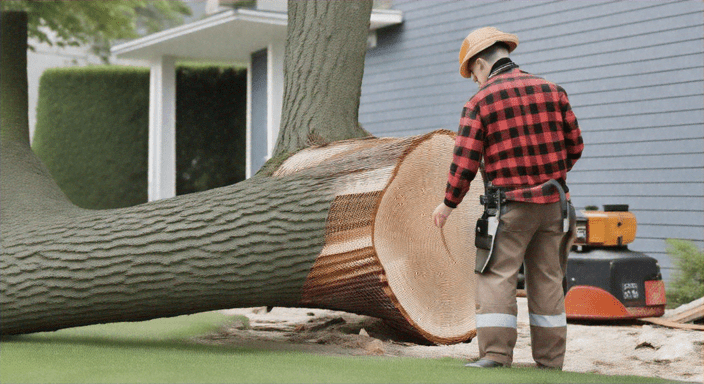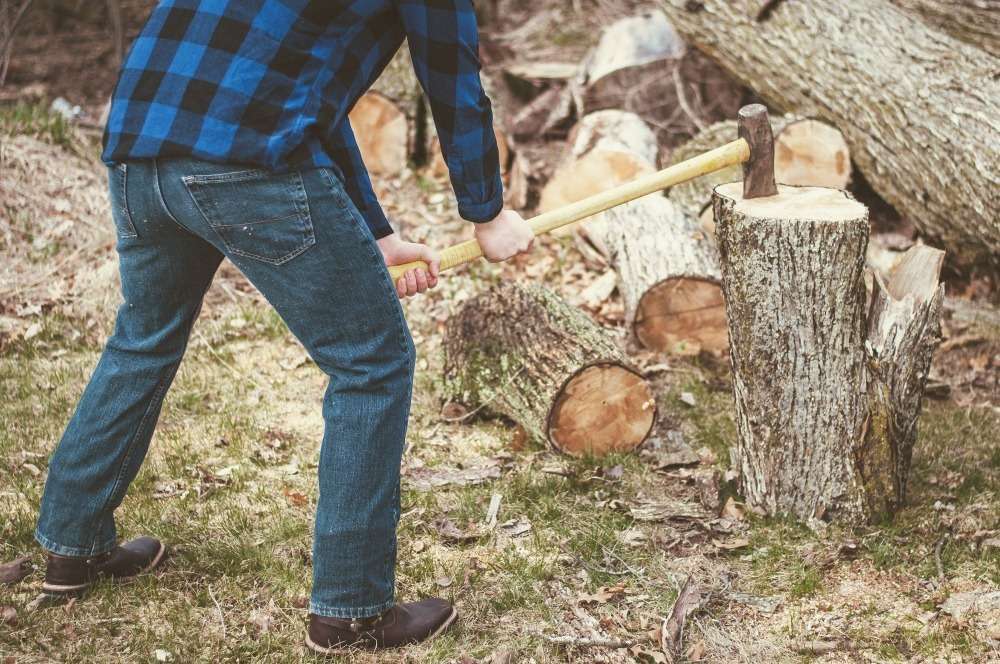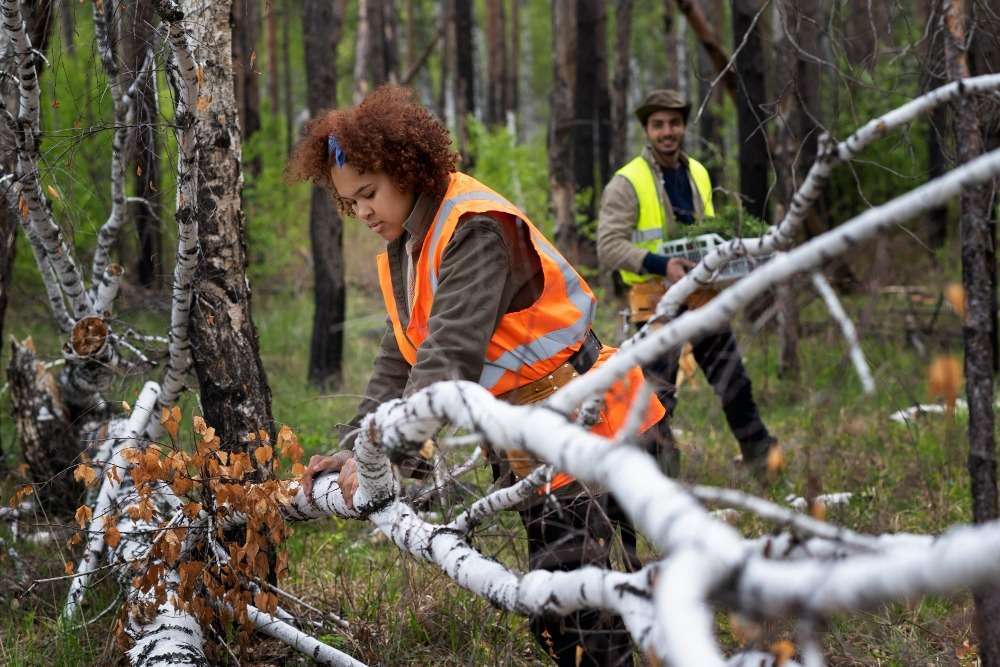The process of eliminating a tree from your property can be both challenging and expensive, with the average cost for removal falling between $150 and $1,500 per tree. Nevertheless, there are strategies to reduce expenses associated with tree removal services.

Elements Influencing Tree Removal Expenses:
- Tree Size: A significant determinant of removal cost is the size of the tree. Larger trees necessitate more time, labor, and equipment, thereby increasing costs.
- Tree Species: The removal process and associated costs can vary based on the species of the tree due to differences in wood density, branch structure, and root systems.
- Tree Condition: The overall cost is influenced by the health and condition of the tree. Trees that are diseased, dead, or decaying may require specialized techniques and additional precautions, resulting in higher costs.
- Location: The complexity of the removal job can be affected by the tree’s position on the property, its proximity to buildings, power lines, or other structures. Trees in difficult or inaccessible locations may require extra effort and resources, leading to increased costs.
- Complexity of the Job: Factors such as the tree’s lean, surrounding obstacles, and accessibility contribute to the overall cost. Trees that present risks or require intricate removal techniques may incur additional charges.
Strategies for Seniors to Save on Tree Removal:
1. Explore Local Programs: Numerous communities provide free or reduced-cost tree removal services for seniors through their assistance programs. Reach out to local government offices, senior centers, or non-profit organizations to learn about available resources in your area. These programs might offer financial aid or connect you with reputable tree removal companies that provide discounted services.
2. Gather Multiple Quotes: Before selecting a tree removal service, obtain quotes from several licensed and insured companies. Compare the prices, services offered, and customer reviews to ensure you are getting the best value. Request detailed estimates that include the scope of work, equipment used, and any additional charges to avoid unexpected costs.
3. Evaluate DIY Options: For smaller trees or straightforward removal tasks, seniors might consider removing the tree themselves. However, safety should be a priority, and it is essential to have the necessary tools, knowledge, and assistance to complete the job effectively. Always assess the risks and consult with professionals for larger or more complex tree removal projects.
4. Schedule Off-Season Removal: Tree removal costs can vary throughout the year, with peak seasons typically resulting in higher prices due to increased demand. Consider scheduling the tree removal during the off-peak season when tree service companies are less busy. This can result in potential discounts or promotional offers as companies aim to fill their schedules.
5. Negotiate for Discounts: Don’t hesitate to negotiate with tree removal companies for discounts or flexible payment options. Some companies offer senior discounts, seasonal promotions, or payment plans to accommodate different budgets. Be transparent about your financial constraints and inquire about any available discounts or cost-saving opportunities for seniors.
Safety Recommendations for Tree Removal:
1. Always Use Protective Gear: Ensure safety by wearing appropriate protective gear, including helmets, gloves, eye protection, and sturdy footwear to minimize the risk of injury during tree removal activities.
2. Evaluate Surroundings: Before starting the tree removal process, assess the tree’s surroundings to identify potential hazards such as power lines, structures, or uneven terrain. Clear the area and establish a safe work zone to prevent accidents.
3. Utilize Proper Equipment: If choosing to remove the tree yourself, ensure you have the necessary tools, such as chainsaws, ladders, and ropes, and use them correctly. Inadequate or improper equipment usage can lead to accidents and injuries.
4. Plan Escape Routes: Plan and communicate escape routes with your team or helpers to ensure everyone knows how to evacuate the area safely in case of unexpected tree falls or accidents.
5. Recognize When to Seek Professional Help: While some tree removal tasks can be DIY, complex or hazardous jobs should be left to trained professionals. If in doubt about the removal process, tree condition, or safety risks, consult with experienced tree removal services.
By adhering to these safety recommendations and considering the factors that influence tree removal costs, seniors can make well-informed decisions, reduce expenses, and ensure an efficient tree removal process. Always prioritize safety throughout the process.





